What makes a road bike frame truly popular? It's not just hype – it's the perfect blend of performance, value, and real-world usability. Trifox's X16 Disc Brake Carbon Frame consistently tops their charts, and for good reason. Let's dive into what makes this frame a standout choice for discerning riders:
Uncompromising Lightweight Performance: Crafted from high-modulus T800 carbon fiber, the X16 boasts an impressive frame weight hovering around 900g (size dependent). This translates directly to snappier acceleration, effortless climbing, and a lively, responsive ride that feels eager under power. It's pure road buzz without the penalty.
Disc Brake Dominance: Embracing the modern standard, the X16 features flat-mount disc brake compatibility. This means superior stopping power in all conditions – wet descents, tight corners, or emergency stops – offering consistent modulation and control that rim brakes simply can't match. Confidence is key to speed.
Stiffness Meets Comfort: Trifox engineers didn't just chase grams. The X16 features a stiff front triangle (head tube, down tube, bottom bracket) for razor-sharp handling and efficient power transfer when you stomp on the pedals. Yet, the carefully shaped thin seatstays and fork provide crucial vertical compliance, absorbing road buzz and reducing fatigue on longer rides. You get race-ready feedback without the harshness.
Modern, Versatile Geometry: The X16 strikes a brilliant balance. Its geometry leans towards aggressive (think shorter headtubes, longer reaches) for efficient power output and aerodynamic potential, yet remains accessible enough for spirited club rides and gran fondos. It’s a frame built for speed that doesn’t demand a pro-level contortion.
Smart, Rider-Focused Design:
Threaded Bottom Bracket (BB86): A massive win for reliability and home mechanics. No press-fit creaks here! Easy installation and long-term peace of mind.
Full Internal Cable Routing: Creates a sleek, aerodynamic profile while protecting cables and hoses from the elements. Looks pro, functions flawlessly.
Wide Compatibility: Accommodates electronic and mechanical groupsets, 28c+ tires (great for comfort/rough roads), and standard 27.2mm seatposts for tuning ride feel.
Why the X16 Resonates:
It delivers pro-level pedigree (lightweight carbon, advanced shaping, disc performance) at a direct-to-consumer price that makes high-performance cycling genuinely accessible. You're not paying for flashy marketing or dealer markups – just exceptional engineering focused on the ride.
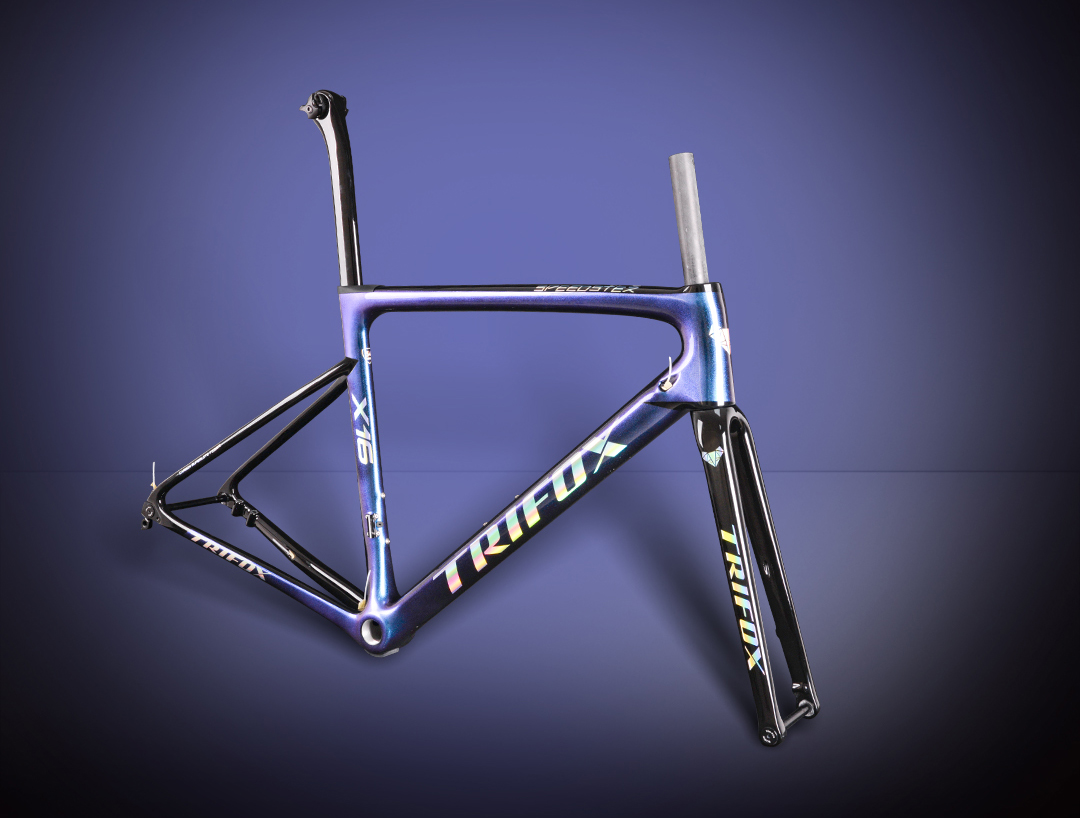
The Trifox X16 isn't just popular; it's popular for a reason. It masterfully combines the essential ingredients modern road riders crave: lightweight carbon efficiency, the confidence of disc brakes, a balanced blend of stiffness and comfort, and practical, reliable design – all wrapped up in a package offering outstanding value. If you're seeking a frame that punches far above its weight class and forms the foundation of a truly exciting road machine, the X16 is Trifox's testament to smart performance.

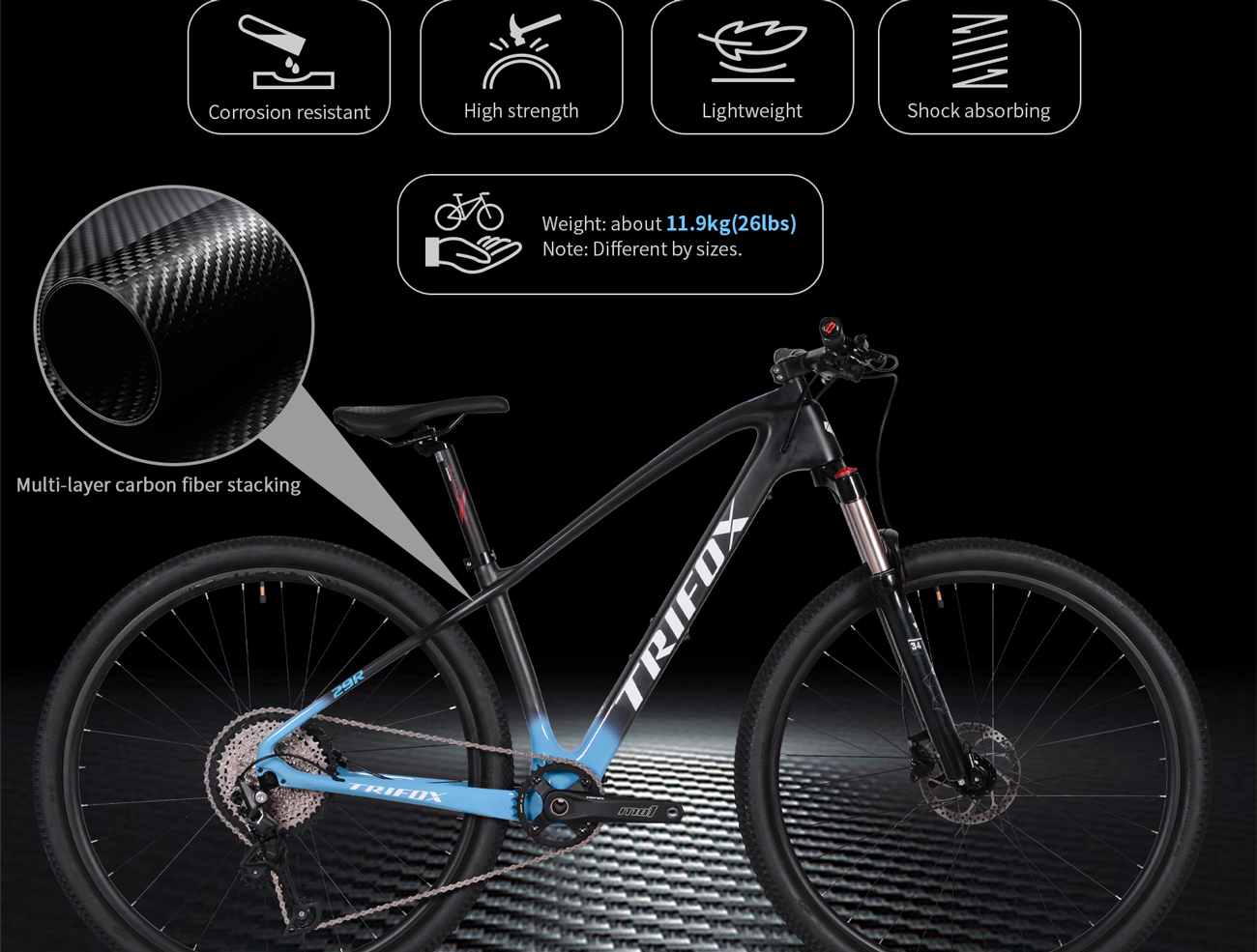
Think building a capable, lightweight hardtail requires breaking the bank? Think again. The sub-$250 frame market is hotter than ever, offering surprising performance for riders seeking value without sacrificing fun. We scrutinized options, and one standout shines: the Trifox MFM200 Carbon Hardtail Frame. Here’s why it’s a budget hero:
The Carbon Game-Changer (Yes, at $227!)
The MFM200 shatters expectations by delivering a full carbon fiber frame at an astonishing price point. Forget heavy steel or flexy aluminum – this frame offers the core benefits of carbon:
Ultralight Build: Weighing in around 1200g (size dependent), it sheds serious pounds compared to alloy frames at this price. That translates directly to easier climbing and a livelier, more responsive feel on every trail.
Stiffness for Speed: Carbon construction ensures excellent pedaling efficiency. Power transfer is direct, minimizing wasted energy when you stomp on the pedals, whether sprinting or grinding uphill.
Tuned Trail Compliance: While stiff laterally, carbon can offer subtle vertical flex. The MFM200’s design helps absorb smaller bumps and chatter, reducing fatigue on longer rides and rough sections, making it more capable than its price suggests.
Modern Geometry for Real Trails
Trifox didn't skimp on contemporary design:
Slack Head Tube Angle (~66-67°): Boosts confidence on descents, improving stability when things get steep or rough.
Steep Seat Tube Angle (~74-75°): Positions you efficiently over the pedals for better climbing traction and comfort.
Reach & Wheelbase: Balanced numbers provide a stable yet maneuverable ride suitable for aggressive trail riding and XC adventures.
Smart Build Compatibility
The MFM200 plays nice with widely available, affordable components:
Boost Hub Spacing (148x12mm rear): Ensures stiffness and compatibility with modern wheelsets.
Internal Cable Routing: Clean looks and protection for dropper posts and derailleurs.
Tapered Headtube: Fits modern, stiff forks for precise steering.
Threaded Bottom Bracket: A huge win for reliability and ease of maintenance – no creaky press-fits!
Value Verdict: The Trifox MFM200
Finding a new carbon frame under $230 feels almost unreal. The Trifox MFM200 delivers the core advantages of carbon – significant weight savings, efficient power transfer, and surprisingly good trail manners – wrapped in modern, capable geometry. While you might find minor finish differences compared to premium frames, the fundamental performance is undeniable.
Is it perfect? Consider:
Finish: Expect functional over flawless – cosmetics might be simpler.
Hardware: Bearings and bolts are adequate, but upgrading later is easy.
Build Cost: Remember, the frame is just the start! Factor in fork, drivetrain, wheels, etc.
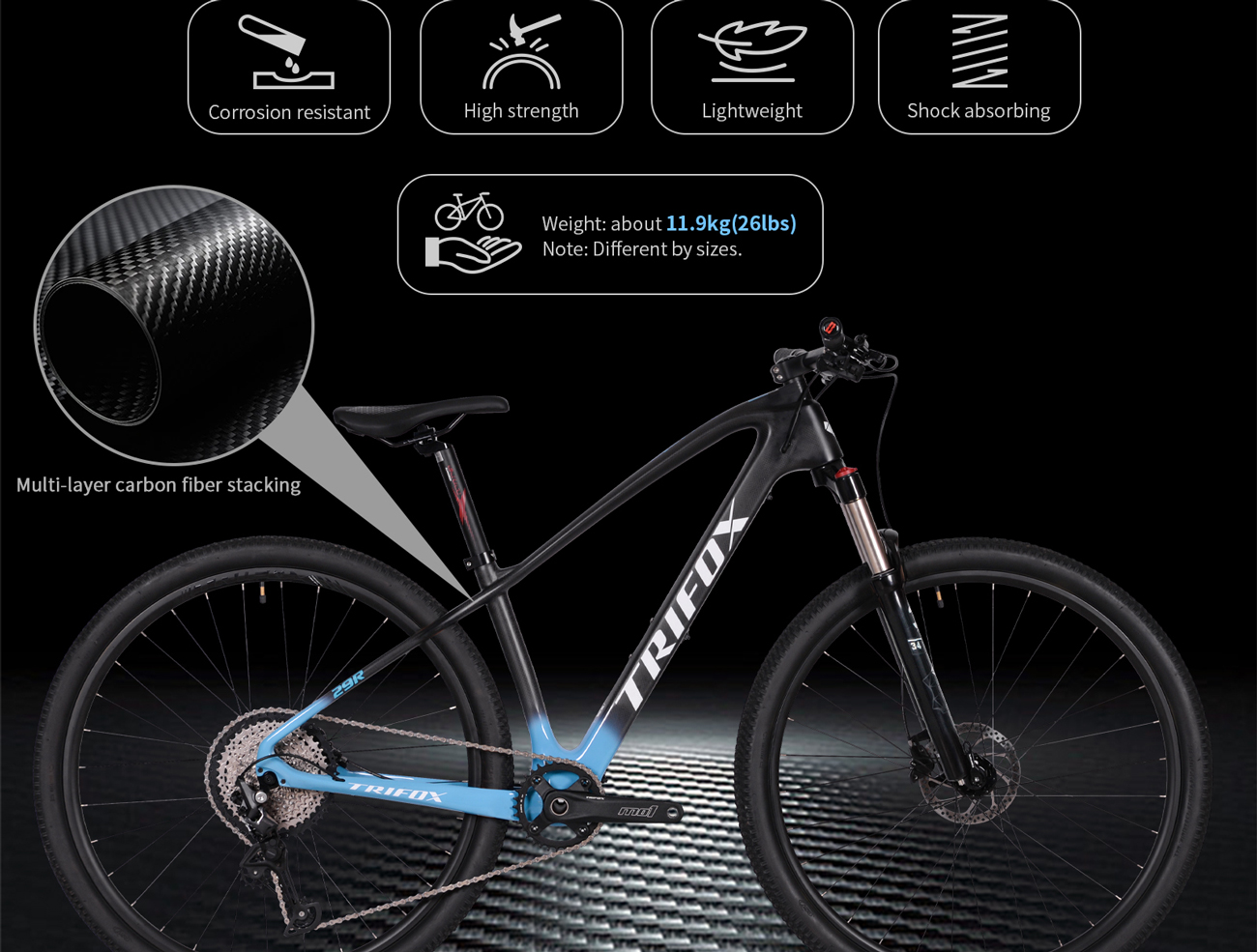
The Bottom Line:
For riders demanding a lightweight, efficient, and modern hardtail platform without blowing the budget, the Trifox MFM200 is a revelation. It proves you don't need $1000+ to get a frame that unlocks hardtail heroics. Pair it with smart component choices, and you’ve got a trail-taming machine that punches way above its weight class. Budget hardtails just leveled up!
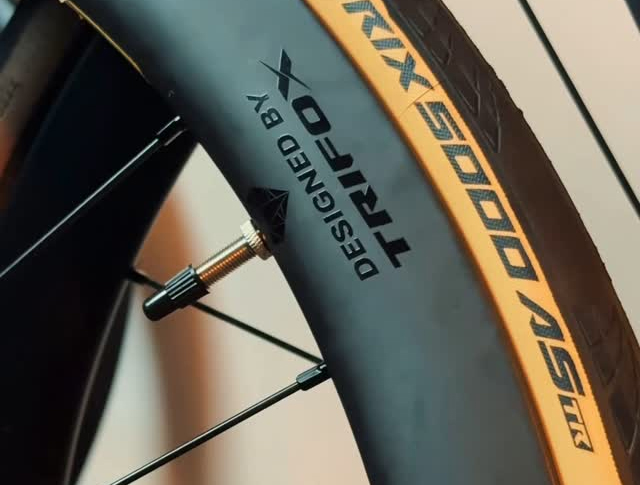
Forget "just" improved stopping power – switching to a dedicated disc brake wheelset unlocks a cascade of performance benefits that fundamentally elevate your road riding. It's not an incremental upgrade; it's a transformation in control, confidence, and capability.
Why Disc Wheelsets Rule the Road:
1. Unshakeable Confidence, Anywhere, Anytime: Rim brakes falter in wet grit or on long, steep descents. Discs deliver consistent, powerful, and modulated braking performance regardless of weather, road grime, or gradient. This translates directly to riding faster with more control when it matters most.
2. Aerodynamic & Structural Advantages: Free from the need for a braking surface, disc wheelsets allow for wider, deeper, and more aerodynamically optimized rim profiles. This reduces drag for free speed. The rim itself is also stronger without the wear surface, enabling lighter constructions and improved impact resistance.
3. Tubeless Paradise: Disc wheelsets are the perfect partners for tubeless tires. Wider rims create a better tire profile for lower rolling resistance, enhanced grip, and the holy grail: fewer flats at lower pressures. No more worrying about brake track wear from heat during hard descents either.
4. Future-Proof Performance: The industry standard is clear. Disc brakes dominate new road bikes. Investing in a quality disc wheelset ensures compatibility with the latest frames and groupsets, protecting your upgrade path.
The Trifox WT11: Performance Engineered for Disc:
The WT11 Disc Brake Centerlock Clincher Carbon Wheelset embodies these advantages:
- Lightweight Carbon Construction: Prioritizes acceleration and climbing response.
- Optimized Aero Depth: Balances speed and crosswind stability.
- Wider Rim Profile: Enhances tire performance and supports tubeless setups seamlessly (valves included!).
- Reliable Centerlock Interface: Ensures secure rotor mounting and easier maintenance.
- Stiffness & Durability: Engineered for powerful sprints and demanding riding.
Who Wins with Disc Wheels?
- All-Weather Warriors: Ride confidently rain or shine.
- Descenders & Climbers: Brake later, descend faster, climb without rim heat worries.
- Speed Seekers: Leverage superior aero and tubeless efficiency.
- Tech Adopters: Invest in the modern standard.
Ready for Uncompromised Control & Speed?
Upgrade your stopping power, unlock aerodynamic gains, embrace tubeless simplicity, and future-proof your ride. Disc wheelsets aren't just better brakes; they're the foundation for a faster, safer, and more enjoyable road experience.
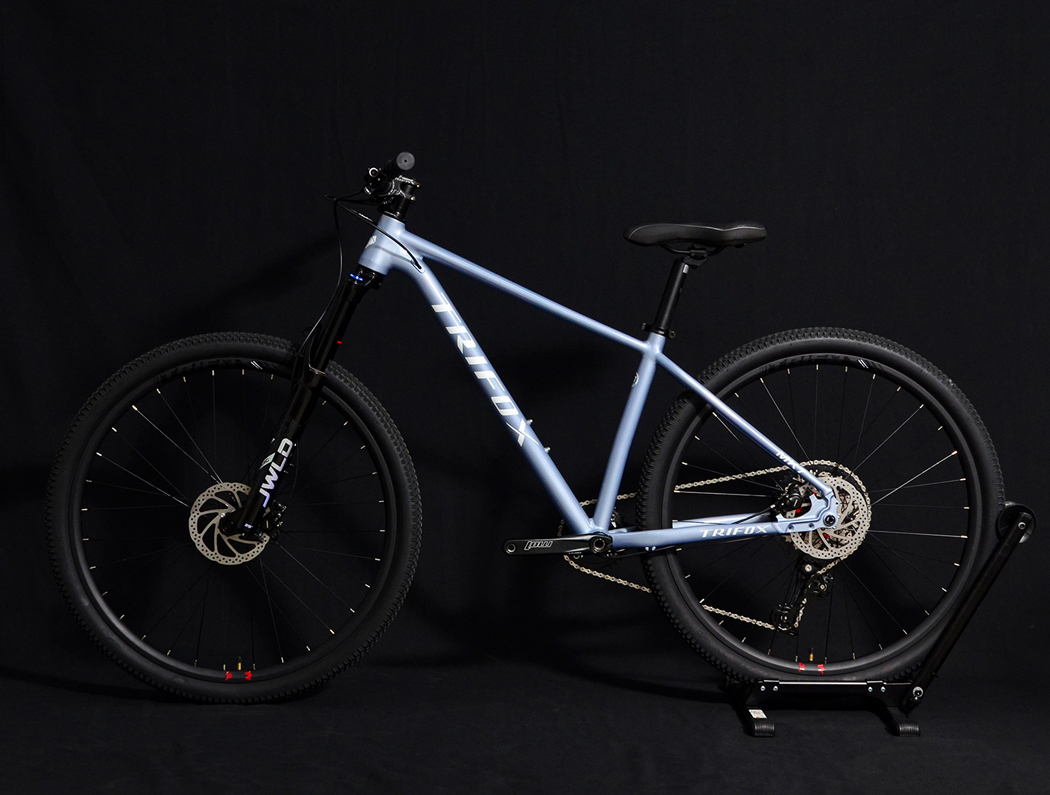
In an era of complex full-suspension rigs, the aluminium hardtail mountain bike holds a special, enduring appeal. It’s not about nostalgia; it’s about a distinct, exhilarating riding experience defined by purity, efficiency, and a direct connection to the trail that modern aluminium frames elevate perfectly.
Why Choose the Aluminium Hardtail?
- Unbeatable Efficiency: Every watt of your pedal power translates directly into forward motion. Aluminium frames offer fantastic stiffness, ensuring minimal energy loss. You feel faster, especially on climbs and flowing singletrack where acceleration is key.
- Trail Telepathy: Without rear suspension, you feel every root, rock, and contour. This direct feedback sharpens your skills, improves your line choice, and creates an incredibly immersive, connected ride. You learn to flow with the trail, not just float over it.
- Lively & Playful: Modern aluminium frames are surprisingly compliant, offering a lively, responsive feel. The hardtail design encourages popping off features, manualing, and flicking the bike around with agility – pure, unadulterated fun.
- Robust & Reliable: Aluminium is tough. It shrugs off rock strikes and minor crashes. Combine that with the inherent simplicity of a hardtail (fewer pivots, less maintenance), and you have a bike built for relentless trail duty and adventure, season after season.
- Incredible Value: You get serious performance and durability without the high cost and maintenance of rear suspension. This frees up budget for higher-quality components elsewhere.
The Modern Aluminium Hardtail: Evolved & Capable
The Trifox PeakTrail Xtreme MK7 exemplifies this allure. It’s not your grandad's rigid bike. Featuring:
- A lightweight, hydroformed aluminium frame with optimized tubing for strength and ride quality.
- Aggressive, modern geometry for confident descending and stability at speed.
- Premium suspension fork (like the Suntour Raidon) to smooth out the front end.
- High-performance drivetrain (Shimano SLX/XT) and powerful disc brakes for precise control.
Who Thrives on a Hardtail?
- Skill Builders: Learn proper technique and become a better rider.
- XC & Trail Racers: Maximize speed and efficiency.
- Value Seekers: Get top-tier performance without breaking the bank.
- Adventure Riders: Dependable, low-maintenance exploration machines.
- Riders Craving Connection: Those who want to truly feel the trail beneath them.
Ready to Embrace the Purity?
Experience the direct thrill and undeniable efficiency of a modern aluminium hardtail. The Trifox PeakTrail Xtreme MK7 delivers the perfect blend of performance, durability, and pure trail feedback. Rediscover why the hardtail remains a cornerstone of mountain biking.
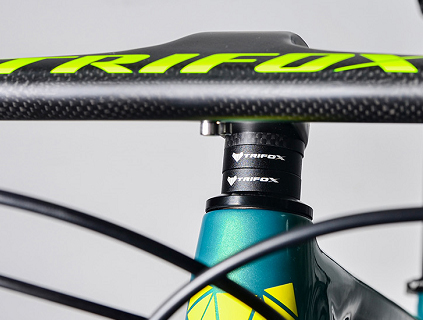
Don't underestimate those humble rings stacked on your steerer tube! Stem spacers are silent heroes in dialing your bike's feel. Positioned above or below your stem, they fine-tune your cockpit’s height – impacting comfort, control, and speed. Here's how:
1. Fit & Comfort:
Spacers directly influence your stack height – the vertical distance from the bottom bracket to the stem. More spacers (or spacers below the stem) create a taller, more upright riding position. This:
Reduces strain on your back, neck, and wrists.
Improves comfort on long climbs or endurance rides.
Opens your chest for better breathing.
Fewer spacers (or spacers moved above the stem) lowers your front end for a more aggressive, aerodynamic posture – ideal for racing or maximizing power transfer.
2. Handling & Stability:
Raising your stem with spacers shifts your weight slightly rearward. This:
Makes steering feel slightly slower and more stable, especially at high speeds or on steep descents.
Increases front-wheel traction for confident cornering.
Lowering the stem shifts weight forward:
Quickens steering response for technical, twisty trails.
3. The Sweet Spot:
Finding your ideal spacer setup balances comfort and control:
XC/Endurance Riders: Often prefer more spacers for comfort during long efforts.
Trail/Downhill Riders: May run fewer spacers (or a slammed stem) for aggressive handling and weight distribution on descents.
Experiment Wisely: Adjust in 5-10mm increments. Never exceed your fork's steerer tube limit! Always leave a 3-5mm spacer above the stem for proper headset preload.
Pro Tip: Use durable, lightweight alloy spacers like Trifox's Precision Spacers. They maintain secure clamping force, resist corrosion, and keep your cockpit clean during adjustments.

The Takeaway:
Stem spacers are free performance tuning! Dialing your stack height optimizes your body's interaction with the bike. A minor tweak can reduce fatigue, boost confidence, and transform your ride. Don't just set it and forget it – experiment safely to find your perfect balance.
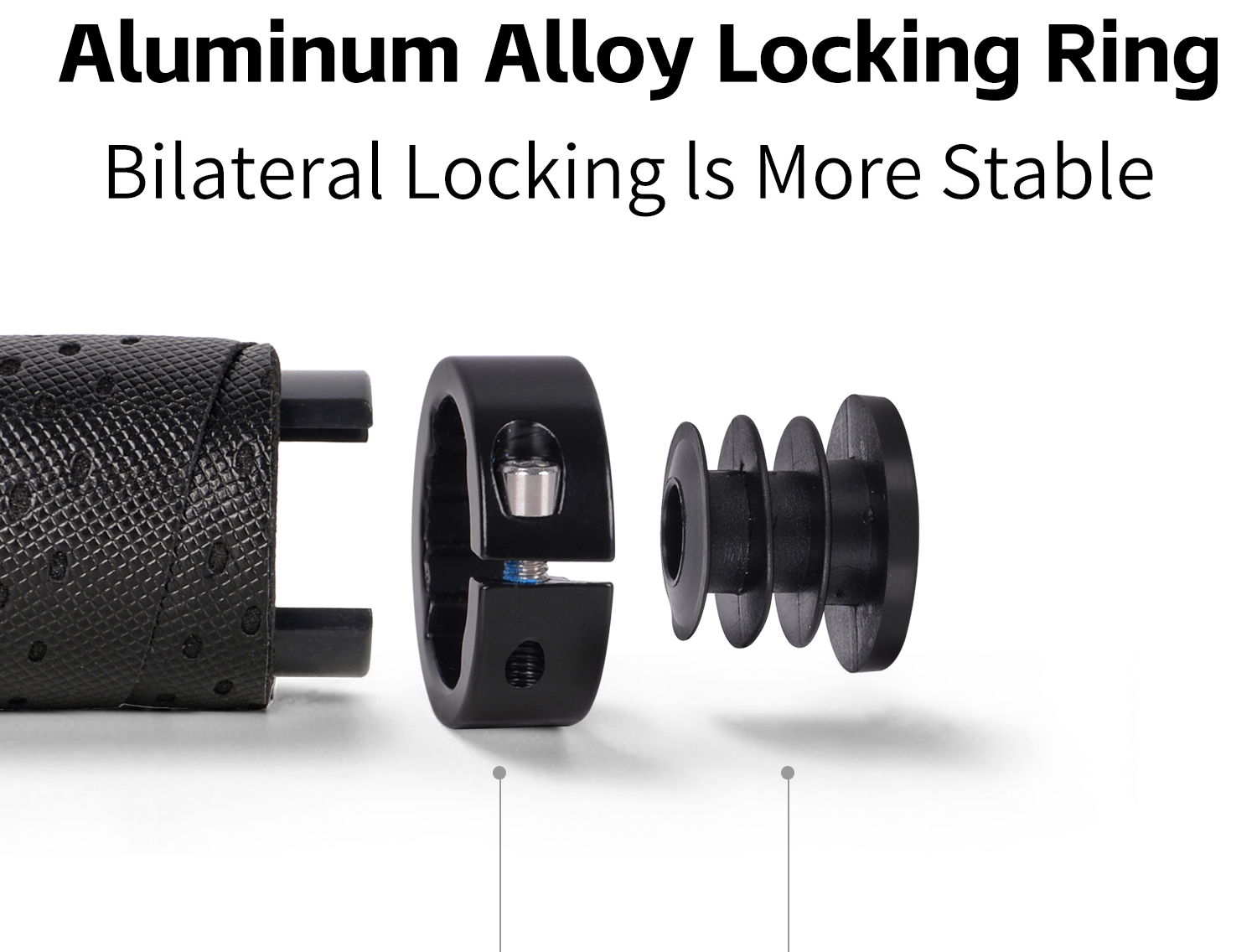
They're small, often overlooked, but your connection to the bike: handlebar grips. Choosing the right pair transforms control, comfort, and confidence on the trail. Forget one-size-fits-all – your perfect grip depends on riding style, hand size, and terrain. Here’s how to find your match:
1. Diameter & Feel:
Standard grips (typically ~30mm diameter) suit most riders. Larger diameters (32-34mm) reduce pressure points and suit bigger hands or those seeking vibration damping. Slimmer grips (28mm) offer precise control for technical riders. Consider cushioning density – soft grips absorb chatter but may lack precision; firmer grips boost feedback for aggressive riding.
2. Pattern & Tread:
Ribbed/Twin-Pattern: Balages grip and vibration absorption. Versatile for trail/enduro.
Knobby/Aggressive: Maximizes grip in wet/muddy conditions or for downhill. Can feel harsh on long rides.
Smooth/Minimalist: Lightweight and comfy for XC/less technical terrain.
3. Lock-On vs. Slide-On:
Lock-On grips (like the Trifox MBT100) feature aluminum clamps for secure, slip-free installation. Essential for rough trails, wet conditions, or riders preferring zero rotation. Slide-ons are lighter but require glue/wire and can twist.
4. Length & Flange:
Standard lengths (~130-135mm) fit most. Longer grips (~140mm) support multiple hand positions (e.g., cornering, climbing). Flanges provide a wrist stop for steep descents; flange-less offer a cleaner look and more hand placement options.
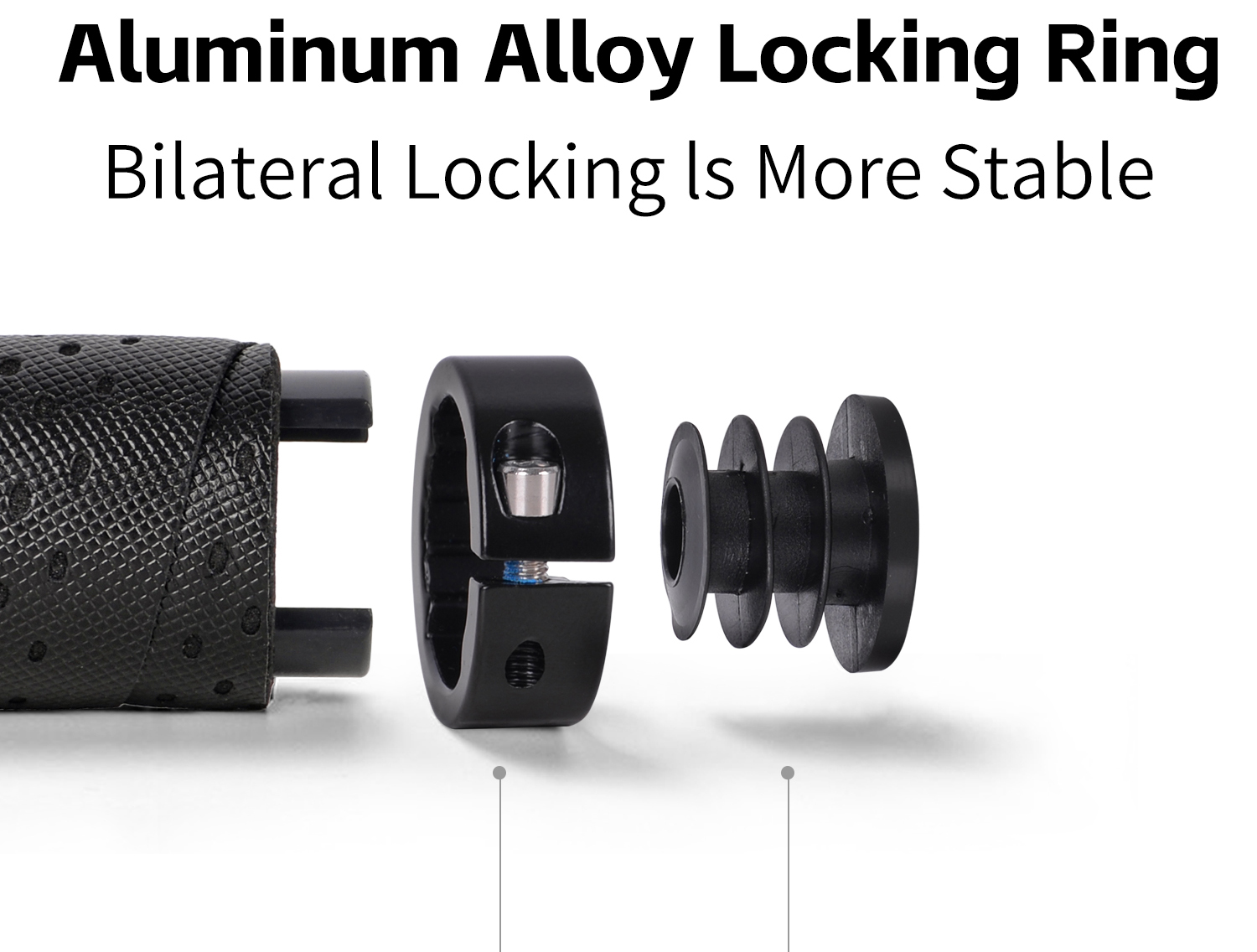
Why Consider the Trifox MBT100?
Dual-Density Construction: Firmer outer tread for precise control + softer inner base for vibration damping.
Aggressive Diamond Tread: Confident grip in all conditions without compromising comfort.
Durable Aluminum Clamps: Tool-free, secure installation that withstands impacts and mud.
Optimized Length (133mm): Versatile for most hand sizes and riding styles.
The Takeaway:
Don't settle for numb hands or slipping control. Experiment! Consider your trails, hand size, and preferences. Grips like the MBT100 offer a balanced, reliable upgrade – enhancing your connection to the trail without breaking the bank.
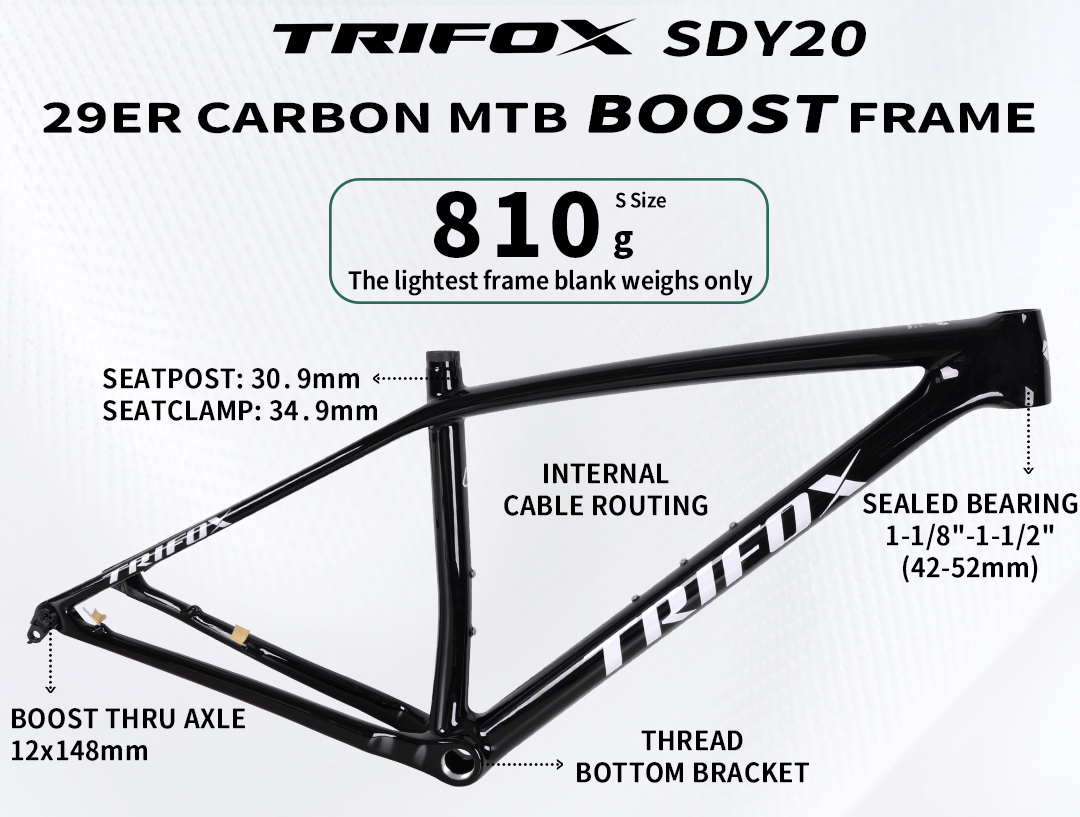
In mountain biking, weight is gravity’s currency. For racers and climb-obsessed riders, every gram shaved unlocks speed, agility, and that precious edge over rivals. At Trifox, this obsession birthed the SDY20 hardtail frame – their lightest 29er carbon chassis ever, engineered to turn ascents into triumphs.
The Magic Number: 930g
Weighing just 930 grams (size S, unpainted), the SDY20 isn’t just light – it’s a feat of carbon optimization. Using T1000 carbon with refined layering, Trifox achieves staggering stiffness-to-weight while maintaining trail-taming compliance. This frame isn’t delicate; it’s intelligently minimal.
Why Lighter = Faster?
- Acceleration: Less mass to propel uphill = instant response when you stamp the pedals.
- Agility: Flickable on switchbacks and effortless to loft over roots.
- Endurance: Reduced fatigue = more watts left for the final kick.
Race-Ready DNA Beyond Weight:
- XC Geometry: A 68.5° head angle and 445mm reach balance stability and razor-sharp precision.
- Boost Spacing: 148x12mm rear / 110x15mm front maximize stiffness and wheel compatibility.
- Stealth Integration: Full internal routing (brakes + dropper) for clean looks and snag-free rock gardens.
Modern Trail Specs: 1x-only, tapered head tube, and room for 2.4" tires.
Who Is the SDY20 For?
- XC Racers: Chase podiums with a frame born for efficiency.
- Climb Conquerors: Transform suffering into flow.
- Weight Weenies: The ultimate gram-shavers'canvas.
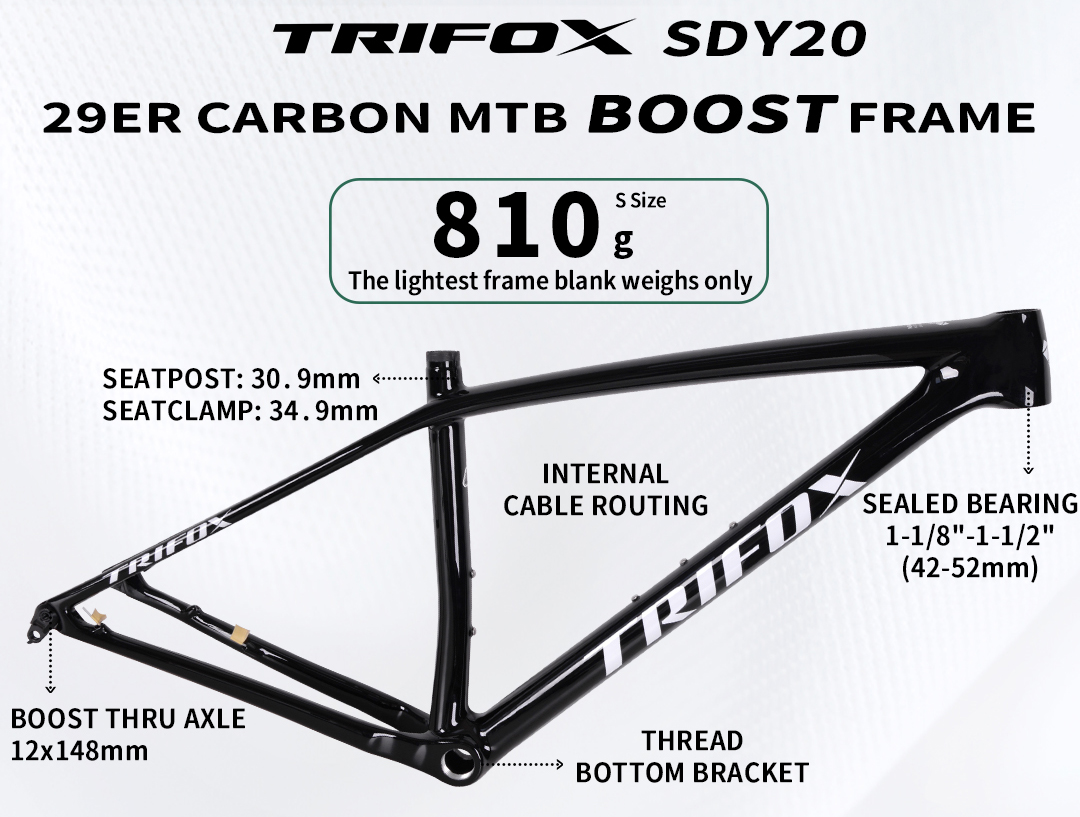
The Verdict:
The SDY20 isn't just a frame – it's Trifox's love letter to climbing. By ruthlessly cutting grams without sacrificing stiffness or control, it delivers a ride experience where the bike disappears beneath you, leaving only you, the trail, and the summit ahead.
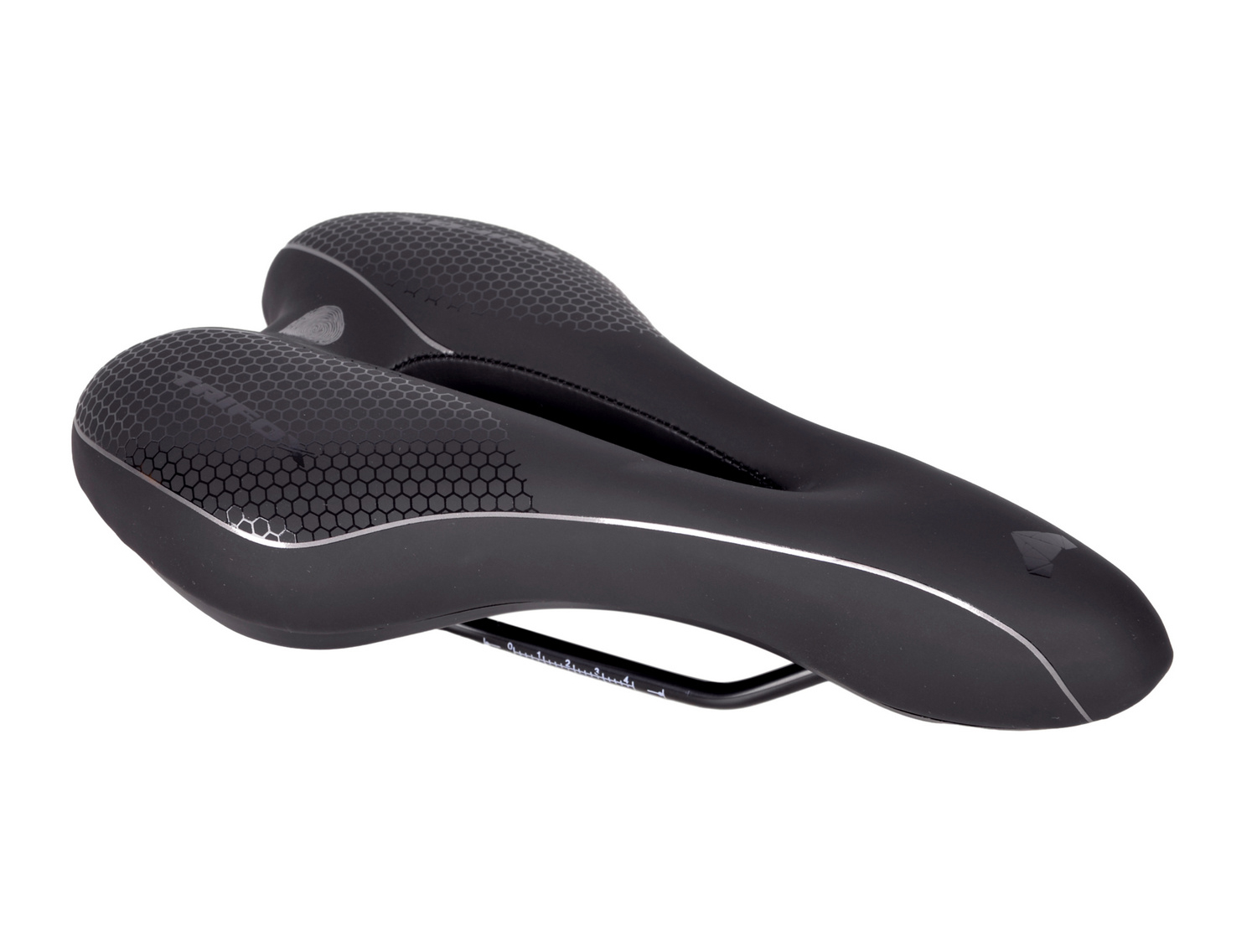
Let's be honest: an uncomfortable saddle can turn the joy of cycling into pure misery. Numbness, chafing, and soreness aren't badges of honor – they're signs you need a better perch! Choosing the right saddle is crucial for pain-free, enjoyable miles. Forget the "toughen up" myth; comfort is king. Here’s how to find yours:
1. Anatomy is Destiny (Especially Gender): Men and women generally have different pelvic bone structures and soft tissue needs. Women's saddles are typically wider at the back with a shorter nose and often a wider central cutout/longer channel. Men's saddles are often narrower. Start by looking at saddles designed for your anatomy. Unisex options exist, but prioritize your specific needs.
2. Riding Position Dictates Shape: How you sit on the bike dramatically impacts pressure points.
Upright (Commuting/Cruising): You sit more squarely on your sit bones ("ischial tuberosities"). Look for a wider, more padded saddle with ample support directly under these bones.
Moderate Lean (Fitness/Gravel): Weight shifts slightly forward. A medium-width saddle with some curvature and moderate padding or a pressure-relief channel is often ideal.
Aggressive Lean (Road Racing/TT): Your pelvis rotates forward, placing more pressure on the soft tissue between your sit bones and pubic arch. Narrower saddles with a distinct curve, minimal padding, and a pronounced channel or cutout are essential to relieve perineal pressure.
3. Measure Your Sit Bones : This is the most important step! Your sit bones need to be properly supported. Many bike shops have simple "assometer" pads you sit on to measure the distance between your sit bones (center-to-center). Add 20-30mm to this measurement – this is generally your ideal saddle width range. Don't guess!
4. Padding: Less is Often More: Thick, soft padding feels great in the shop for 30 seconds, but on a long ride, it compresses, loses support, and can actually cause more chafing and soft tissue pressure. Look for supportive foam or gel strategically placed over the sit bone areas, with firmer bases. Quality materials matter.
5. Pressure Relief is Paramount: Cutouts or elongated channels in the center are designed to reduce pressure on nerves and soft tissue (critical for preventing numbness). If you experience numbness, prioritize saddles with this feature. The size and shape of the relief area vary significantly – try different options.
The Golden Rules:
- Ignore the "Break-In" Myth: A good saddle should feel mostly comfortable on the first few rides. Minor adjustments might happen, but it shouldn't cause significant pain.
- Test Ride is Essential: Reputable shops often have demo saddles or generous return policies. Ride it for at least a few hours over your typical terrain before committing. What feels okay for 10 minutes might be agony at 60.
- Perfect Fit Trumps Brand/Price: The most expensive or popular saddle isn't necessarily your saddle. Focus on the fit fundamentals above.
- Position Matters Too: Ensure your saddle height and fore/aft position are correctly set. Even the perfect saddle won't work if it's poorly positioned.
Finding your perfect saddle takes patience and testing, but the payoff -miles of comfortable, pain-free riding – is absolutely worth the effort. Ditch the discomfort and saddle up for joy!
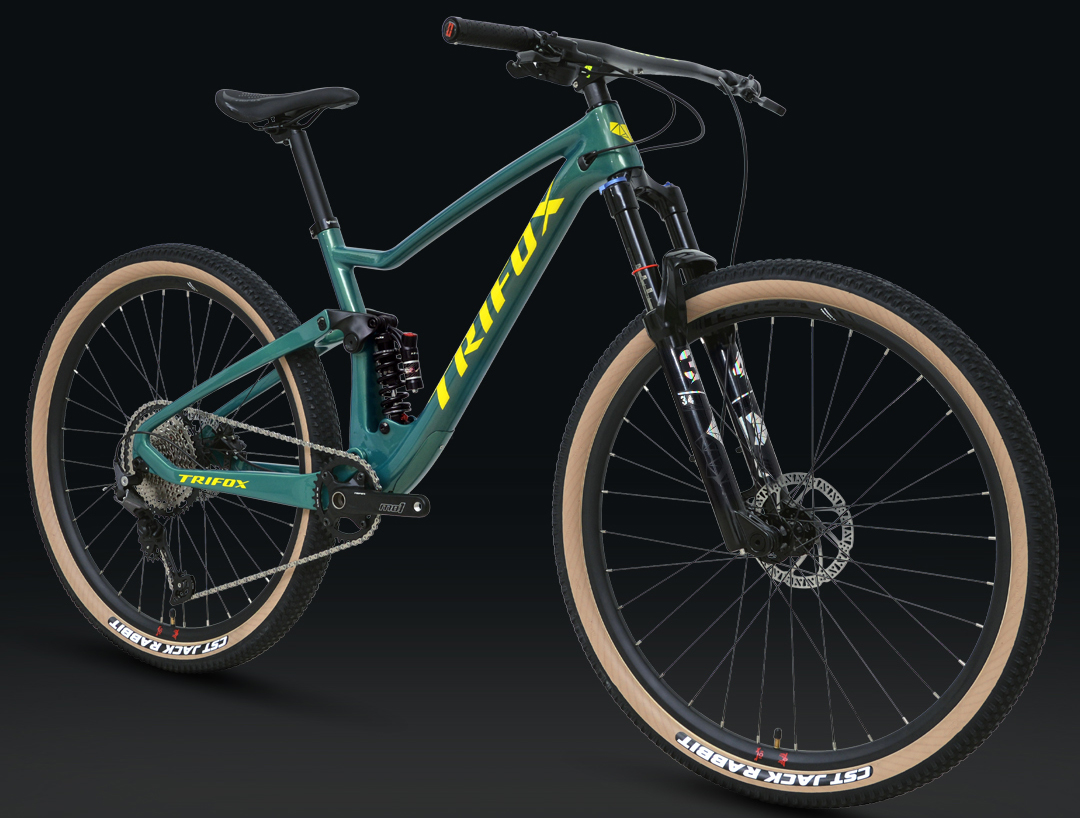
In an era dominated by plush suspension, choosing a rigid mountain bike seems counterintuitive, even masochistic. But hear us out! Ditching the squish unlocks a unique, rewarding experience that many riders crave. Here’s why rigid is rad:
Pure Connection & Skill Boost: Without suspension masking the trail, you feel everything. Every root, rock, and ripple buzzes through the bars. This forces you to read the terrain ahead, choose smoother lines, and actively use your arms and legs as suspension. It sharpens bike handling skills like nothing else, making you a smoother, more precise rider everywhere.
Simplicity & Reliability: No stanchions to service, no air springs to adjust, no dampers to bleed. Rigid forks and frames are virtually maintenance-free. Fewer moving parts mean fewer things to break, leak, or wear out. Just lube the chain and ride. It’s cycling distilled to its essence.
Weight Savings & Efficiency: Suspension forks add significant weight (often 1.5kg+). Rigid forks are featherweight. This translates directly to a lighter, more nimble bike, especially noticeable when climbing or accelerating. Every pedal stroke feels direct – no energy lost compressing suspension bob.
Cost-Effectiveness: Quality suspension forks are expensive. Rigid forks, especially steel or quality alloy, offer incredible performance per dollar. Building or converting to rigid can save significant cash upfront and long-term on maintenance.
The "Analog" Experience: Riding rigid is raw and visceral. It’s about flow over brute force, finesse over forgiveness. The satisfying buzz of tires on hardpack, the silent glide through the woods – it’s an unfiltered conversation with the trail. Many find it incredibly engaging and fun.
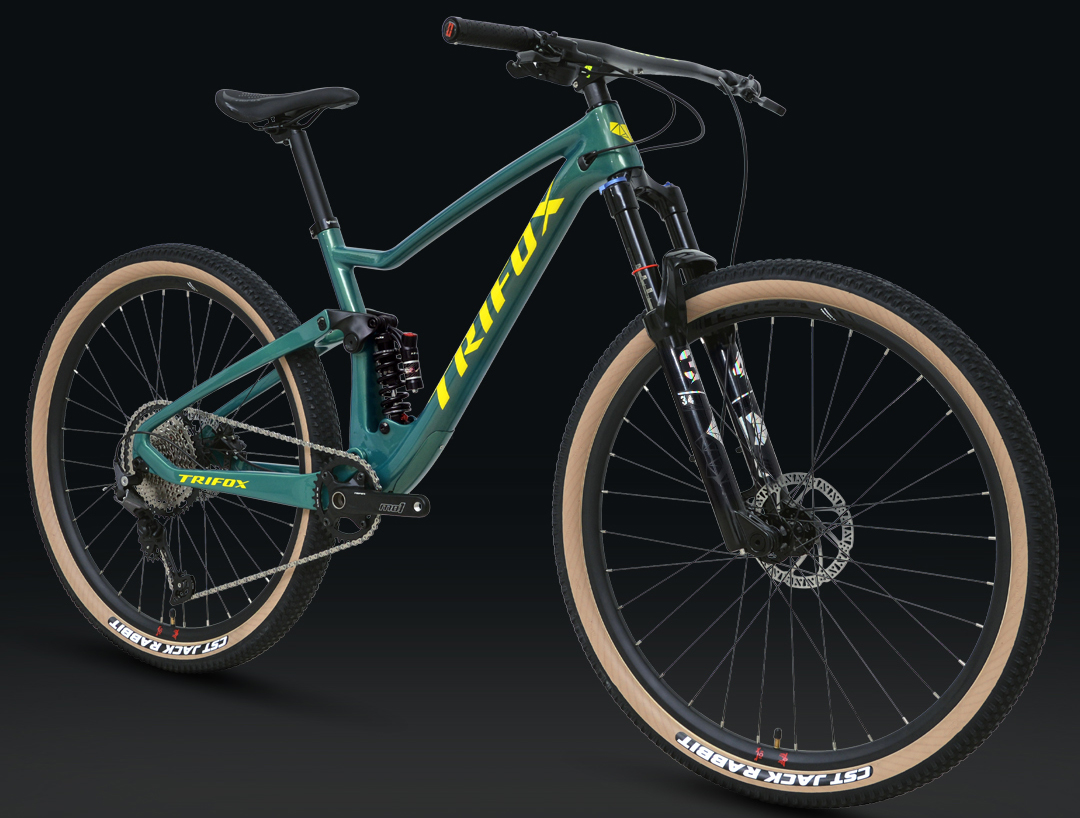
Is it for everyone? Honestly, no. Choppy, high-speed chunk will beat you up. But for flowing singletrack, gravel adventures, bikepacking, commuting, or simply honing your skills, rigid excels.
Ready to simplify? Check out lightweight, durable rigid forks at Trifox Bike. Rediscover the trail. Ride rigid!


























































